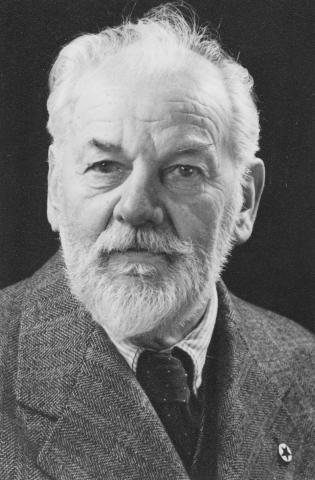Rudolf Kaftan studied mathematics and physics at the University of Vienna. After graduation, he worked as a secondary school teacher, including at Währinger Gymnasium at Klostergasse 25, and as a private tutor to Heinrich Obersteiner, director and proprietor of Sanatorium Görgen at Billrothstraße 69 in Vienna's 19th district. At the same time, he was director of the Danubio language school in Alserbachstraße in the 9th district founded by the Esperanto Association. From his earliest youth he was interested in clocks and clockwork mechanisms and began to collect them while still at school. He kept his rapidly growing collection in an attic apartment in the sanatorium. When the property was sold in 1917, he had to look for a new place to store his collection, which had grown in the meantime to 10,000 items. On 4 May 1917, the Vienna city council decided to purchase it for the Städtische Sammlungen, where it was managed by Kaftan as the Uhrenmuseum der Stadt Wien (City of Vienna Clock Museum). To enable the new museum to make purchases, Kaftan founded the Verein der Freunde des Uhrenmuseums (Association of Friends of the Clock Museum), which in 1917 acquired the clock collection of the poet Marie von Ebner-Eschenbach and a year later the collections of the Jewish businessman Gustav Leiner and the watchmaker Josef Nicolaus. With the Association's aid, the Uhrenmuseum was installed in the former Palais Obizzi at Schulhof 2 in the 1st district. Kaftan established an extensive network through the Association. He gave talks in Austria and other countries and on Radio Wien and guided thousands of visitors through the collection. Thanks to his tireless efforts, the Uhrenmuseum enjoyed considerable publicity, which continued through the period of Austrofascism and the Nazi regime. Kaftan steadily enlarged his collection and during the Nazi era was able to add to the Uhrenmuseum's holdings, helped by his numerous contacts to watchmakers and collectors and the close proximity of his apartment at Schulhof 6 to the office of the temporary administrator, the Zunft der Juweliere und Uhrmacher (Guild of Jewellers and Watchmakers), and its "Arisierungsstelle" (Aryanization office). On 22 March 1938, a few days after the annexation of Austria, he visited the apartment of the Jewish iron and metal dealer Paul Schwarzstein and acquired his watch collection for the Museum in 1939. Other acquisitions came from the assets of those persecuted by the Nazis, for example the clocks owned by the watchmaker and antiques dealer Alexander Grosz, which Kaftan collected in person from Grosz's apartment on 28 October 1938, or from Emil Politzer and Josef Ungar, who also worked in the watch and jewellery business.
After the war, Kaftan, who – as far as we know – had been neither an applicant nor a member of the NSDAP, remained in his position as director of the Uhrenmuseum until his death in 1961. From 2011 to 2013 on behalf of the city of Vienna, the Historical Commission investigated the historical background to the people after whom Viennese streets are named, including Rudolf Kaftan. It concluded that Kaftan, after whom Kaftangasse in the 21st district was named in 1972, had consciously purchased expropriated Jewish assets but was not politically active in support of Nazism.

